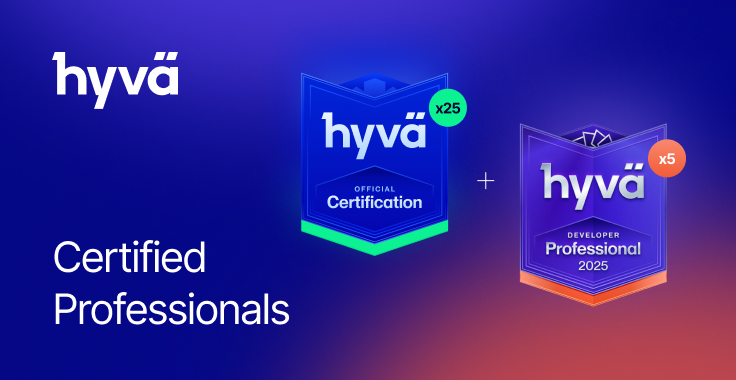ChatGPT, OpenAI's revolutionary text-generating AI chatbot, has made a profound impact worldwide. Initially conceived as a tool to turbocharge productivity in tasks such as essay writing and code generation through concise text prompts, it has transformed into a powerhouse embraced by over 92% of Fortune 500 companies, catering to diverse needs.
While there exists a potentially dubious side to ChatGPT, the undeniable reality is that AI tools are firmly ingrained in our present and foreseeable future. Surpassing 100 million weekly active users within a year of its launch, ChatGPT continues to push boundaries.
Given these advancements, one may wonder: Is GPT-4 superior, and is investing in GPT-4 worth it? Let's take a closer look at the capabilities of GPT-4 and analyze OpenAI's 99-page technical report, which still leaves many questions unanswered.
OpenAI has recently started a roll-out of GPT-4, an upgraded language model that surpasses its predecessors in all aspects while prioritizing user safety. Let’s take a closer look at the capabilities of GPT-4 and analyze OpenAI's 99-page technical report, which has still left many questions unanswered.
GPT-4 Progress and Creative Capabilities
1. The Intelligent AI Assistant Roll-out
OpenAI announced the integration of GPT-4 into the operations of various companies. The most advanced chatbot is used for organizing databases for Morgan Stanley, improving user experience on Stripe, and assisting customers of Khan Academy. Microsoft's Bing search Tengine is yet another big name in the list of integrations as it employs GPT-4 in its chatbot.
Compared to Grok and Google's Bard, the use of GPT-4 highlights a substantial progression in the capabilities of natural language processing and artificial intelligence. While specific details about Grok and Google's Bard remain undisclosed, it's noteworthy that GPT-4 has showcased versatility in various industries, meeting unique enterprise needs in finance, online platforms, and education.
2. Access to the Advanced Chatbot
GPT-4 is currently exclusive to selected testers and paying subscribers of ChatGPT Plus, which costs $20/month, excluding taxes. Compared to other AI tools on the market – such as Jasper AI with its word-count pricing model, the monthly total for the smartest chatbot on the market GPT-4 is reasonable and worth the investment.
3. Surpassing Predecessors
OpenAI's latest language model, GPT-4, can solve complex tasks that surpass the capabilities of GPT-3.5, which serves as the foundation for ChatGPT.
Developers subjected GPT-4 to real-life tests in fields such as law, mathematics, psychology, and English language, where it outperformed GPT-3.5 and even scored as high as the top 10% of law graduates. GPT-4 also outperformed its predecessor in the U.S. bar exam and the widely taken standardized GRE (Graduate Record Exam).
4. Enhanced Creativity and Coding Capabilities
GPT-4's creative abilities have also significantly improved compared to its predecessors. One illustration is that GPT-4 has the capability to adopt a Socratic conversational style, whereby it can ask questions in response to questions.
With the latest AI assistant version, even users with limited programming knowledge can create classic games or implement original ideas. For example, GPT-4 can create iPhone apps using SwiftUI or generate a playable game in less than a minute.
5. Transformation into TaxGPT
The GPT-4 has undergone significant modifications in allowing to specify the desired behavior and response format. Greg Brockman, OpenAI's president, during his presentation, transformed ChatGPT into "TaxGPT," successfully turning a chatbot into a digital tax assistant.
Moreover, GPT-4 can process requests eight times larger than its predecessor, handling up to 32,768 tokens and approximately 24K words compared to the previous 3K.
6. Visual Processing Capability
ChatGPT's latest model can process images alongside text. Users can now combine visual and textual information during communication, such as taking a photo of food and asking for recipe suggestions. However, the "output" will continue to consist solely of text.
GPT-4 understands graphs, blueprints, and memes, and generates image descriptions. It was also demonstrated to recognize handwritten text. The feature hasn’t been yet rolled out for public use due to safety concerns. Simultaneously, the vision feature of the most intelligent chatbot GPT-4 has been put to the test into the Be My Eyes app for assisting people with limited vision.
Be My Eyes has initiated the development of a Virtual Volunteer™, utilizing GPT-4's new visual input functionality (currently in research preview), which is able to generate an equivalent level of comprehension and contextualization to that of a human volunteer.
Analyzing OpenAI's GPT-4 Report: Key Takeaways
On the day when GPT-4 was released, OpenAI published a 99-page PDF document detailing their work, which included both a report and a "system map”.
According to the report, OpenAI's main efforts were focused on making the language model behave predictably and produce reliable results while staying malpractice-proof. For these purposes, the company developed a reward system that helped evaluate GPT-4's performance by categorizing its responses into four categories:
- Accurately formulated refusal (A),
- Inaccurately formulated refusal (B),
- Response with undesirable data (C),
- Common response without undesirable information (D).
In August 2022, the multimodal AI finished its training process, and the next six months were dedicated to fine-tuning using the RLHF method. While OpenAI has yet to disclose many technical details about the neural network's architecture, they claim that the model's reliability has increased by 40% compared to GPT-3.
Hallucinations
OpenAI CEO Sam Altman advised not to forget that the neural network makes mistakes and modestly noted that the more time spent with GPT-4, the worse the impression you get.
It was about what's known as "hallucinations" in the neural network – situations where the model appears to confidently answer questions but on the fly provides information that doesn't align with reality. GPT-4 got a protocol implemented to address these hallucinations.
The Fine Line of Content Security
The OpenAI report reveals that security issues were a greater concern for developers than "hallucinations". Releasing the latest version of GPT-4 in mid-2022 would have been a disaster, as enthusiasts could have easily bypassed its protection and obtained unwanted information.
However, thanks to fine-tuning, a ready-to-launch version was created that demonstrated greater resistance to "provocations" compared to the early version.
Read Team on Duty
During fine-tuning, developers deliberately provoked the neural network to identify its worst behavior – a process known as "red teaming" in cybersecurity. The report highlights the most conflicting reactions of the AI, presenting the possible risks in vivid detail.
It's fascinating to see how OpenAI is addressing these concerns to make GPT-4 more secure and effective. For example, the early GPT-4 version could have suggested how to synthesize dangerous chemicals at home or find a site for illegal weapon purchases. The final version of GPT-4 will not undertake such tasks.
Potential Impact on The Economy and Society
In the report on GPT-4, the final section centers on the potential economic and social effects.
This raises numerous concerns, as it's not merely a matter of certain professions being automated. The potential ramifications could be significant and far-reaching, extending to issues of global significance such as changes in world processes, as well as a broader degradation of the quality of information.

AI is currently making a substantial impact on various industries, and according to an analysis conducted by Accenture and Frontier Economics, its potential is even more significant.
This report suggests that, by 2035, artificial intelligence could lead to a potential increase of up to 40 percent in labor productivity in developed countries
The developers of the neural network are especially apprehensive about the potential for uncontrolled acceleration, where the fast and unpredictable expansion of large language models (now with the added capability of multimodality) could overshadow security concerns.
The Transparency of the Technology is Uncertain
OpenAI's recent report on GPT-4 has left the industry confused and raised questions for developers. While the report appeared academically rigorous, it lacked concrete technical details, leaving experts to question its scientific validity.
Third-party developers cannot replicate GPT-4's experiments due to the unknown architecture, and there is a lack of information on benchmarks and test performance. Concerns have also been raised about the lack of transparency surrounding the datasets used to train GPT-4, potentially leading to bias in the chatbot's responses.
Some experts suggest that OpenAI may have hidden technical details to avoid future legal issues, but the creators of GPT-4 have not responded to these claims.
AI Evolution: Prioritizing Ethics or Revenue?

According to Marketsandmarkets, The global artificial intelligence market achieved a value of USD 150.2 billion in 2023 and is projected to exhibit a CAGR of 36.8% from 2023 to 2030.
The revenue outlook for 2030 is estimated to reach $1,345.2 billion. This assessment is anchored in 2022 as the base year, with historical data spanning from 2023 to 2030.
Since ChatGPT's launch, many major corporations, such as Google and Microsoft, have announced their generative neural networks.
OpenAI's presentation came at the same time as Microsoft's dismissal of its neural network ethics specialists, causing concern as Microsoft is OpenAI's main investor and partner. The decision has led to accusations that Microsoft is prioritizing AI product deployment and competition over ethical considerations.
The lack of technical details regarding GPT-4 raises questions about the future of AI development. Without transparency and ethical considerations, the AI industry risks losing the trust of the public and creating biased systems that perpetuate inequality.
Final Thoughts
GPT-4 represents a remarkable advancement in AI technology, with the potential to offer substantial benefits to various fields. However, the concerns around transparency and ethical considerations, as well as the societal impact, should not be underestimated.
Striking the right balance between technological progress and responsible development is key to ensuring AI's positive influence on society. OpenAI and the broader AI community must work collaboratively to address these challenges and build trust in the technology.
So, does GPT-4 represent an improvement? Is GPT-4 worth it? The answer to both questions is affirmative. However, it is important to remember that this technology is designed to assist in professional tasks, not to serve as a substitute for human workers.
FAQs
What are the potential applications of GPT-4's creative abilities?
GPT-4's creative abilities enable it to adopt a Socratic conversational style and assist users in programming tasks, such as game development. It can generate iPhone apps using SwiftUI and create playable games in a matter of minutes. However, it should be noted that ChatGPT-4 does not have the capability to read images.
Can GPT-4 be customized for specific tasks?
Yes, GPT-4 is highly customizable. It can be adapted for various purposes, as demonstrated by transforming it into "TaxGPT" to serve as a digital tax assistant. Additionally, ChatGPT has the ability to process and respond to text-based prompts; however, it does not have the capability to watch videos.
What are the potential economic and social impacts of GPT-4?
GPT-4's impact extends beyond just automating professions. It could have significant implications on labor productivity, global processes, and the quality of information available to the public.
Why is there concern about transparency in GPT-4's development?
Some experts are concerned about the lack of technical details and transparency in GPT-4's development, which makes it challenging for third-party developers to assess its capabilities and potential biases.


















